Nội dung bài viết
Factories use a variety of motors, conveyors, pumps or fans to serve the production process and supporting activities. During that process, the operating intensity of the equipment needs to be flexibly changed to meet the needs of many production stages.
Previously, adjusting industrial electrical frequencies with large capacity loads was very difficult. You could only change the transmission ratio, switch ON – OFF, and use a throttle valve. These solutions are technically effective but do not save energy. Therefore, inverters are a modern solution to change the frequency of electrical equipment, helping to increase productivity, reduce engine maintenance costs and save energy consumption. Learn about the structure, functions, and benefits of using an inverter in the following article.
What device is an inverter?
An inverter or inverter is an electronic device capable of converting electromagnetic energy on DC or AC current in the form of one frequency and phase into another frequency and phase. Through this, the speed of the motor is controlled steplessly from fast to slow, without the need to use a mechanical gearbox. In essence, the inverter does not generate power but only regulates power.
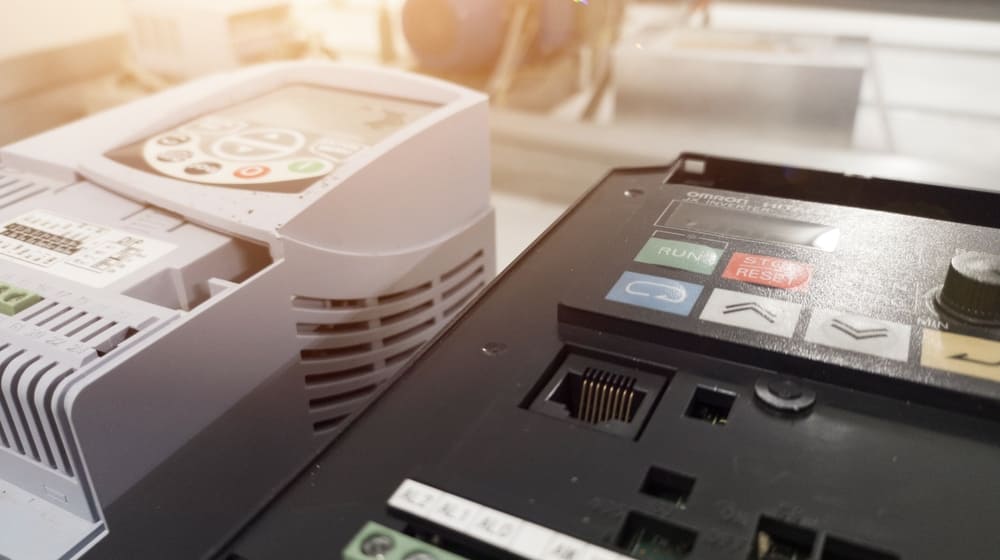
Inverters can be completely electronic or have a combination of electronic circuitry and mechanical effects. Based on voltage level, there are types of inverters: 1 phase 220V, 3 phase 220V, 3 phase 380V,… Currently, the main inverter lines are multi-purpose, in addition to specialized inverters for: pumps, fans, elevators, cranes, air conditioners, solar energy systems, HVAC systems, specialized production systems,…
Inverter structure
The inverter has main components designed and linked to operate under a stable and durable principle in industrial environments. The main components in the inverter structure include:
- Power circuit: provides inverter input power.
- Control circuit: control center of the inverter, with control, programming and protection functions.
- Frequency conversion circuit: the main circuit of the inverter, which has the function of converting the input current frequency into a new output current frequency. The conversion circuit includes rectifier, filter, IGBT inverter.
- Protection circuit: has the function of signaling and interrupting the circuit when there is an incident, including overload protection devices, overcurrent protection, and other electrical incident protection devices that affect the operation of the system.
- Screen – keyboard: tool for operators to perform monitoring, settings and control operations.
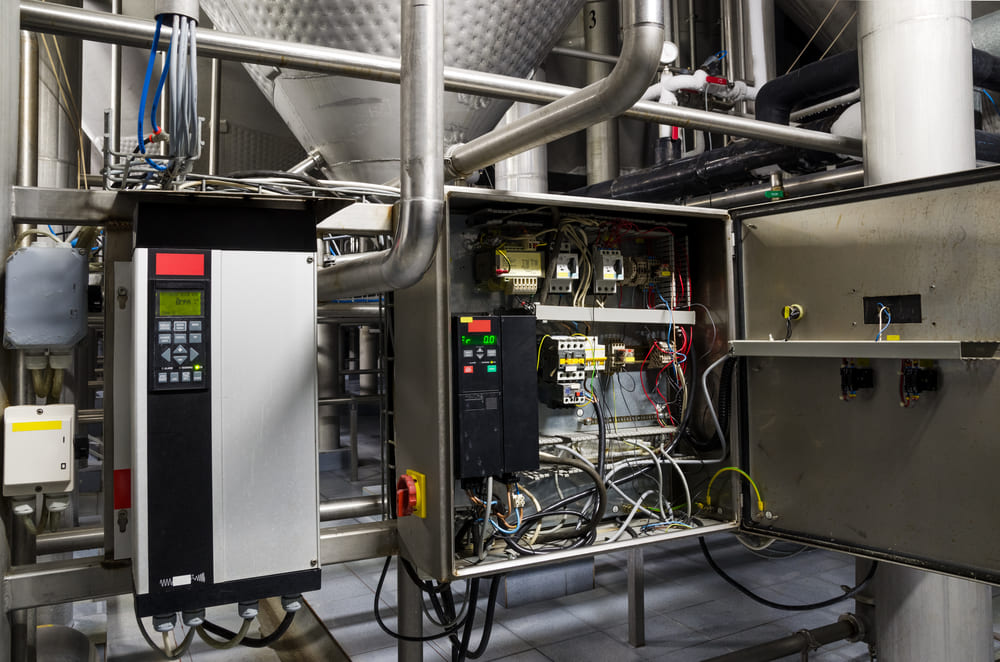
In addition, the inverter also has integrated auxiliary components depending on system requirements: communication module, AC – DC reactor, braking resistor (discharge resistor),…
The power conversion efficiency of the inverter is very high thanks to the use of modern power semiconductor components, helping to reduce energy consumption to the equivalent of the energy required from the system. In addition, the new generation inverter is integrated with many control types to meet many different types of loads (multi-function inverter). The inverter can be integrated with a PID compatible with many communication standards, suitable for control and monitoring in SCADA systems.
See more: Compare inverters and soft starters: Which solution to choose?
Working principle of inverter
The working principle of the inverter is shown through two main stages:
- Step 1: Rectify and filter the 3-phase (or 1-phase) AC power source into a flat DC power source, performed by a diode bridge rectifier and capacitor. Therefore, the cosphi coefficient (cosφ) of the inverter has a minimum value of 0.96, regardless of the load.
- Step 2: The DC voltage is inverted into a symmetrical 3-phase AC voltage, performed using the IGBT system (isolated gate bipolar transistor) with pulse width modulation (PWM) method.
With the advancement of current semiconductor technology and inverter manufacturing, the pulse switching frequency can reach the ultrasonic frequency range, helping to reduce motor noise and losses on the motor iron core.
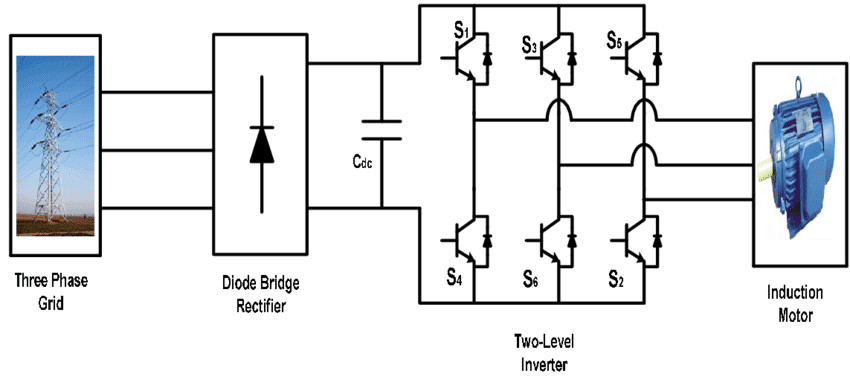
The output signal frequency depends on the control voltage and default parameters of the inverter. The operator can directly control or preset the operating mode for the inverter.
During operation, the inverter may experience overload, phase loss, overvoltage, voltage drop, etc. Then the inverter will issue an error warning or stop supplying power to the motor if it detects a serious error that can cause system damage.
Benefits of using an inverter
The formula for calculating engine speed is as follows:

It can be seen that the engine speed depends on 3 factors, and also 3 methods of changing the engine speed:
- Coefficient (p) motor pole pair
- Slip coefficient(s).
- Frequency (f) of input voltage
Compared to the other two methods, frequency change is the most effective for changing motor speed. Inverter is the most optimal device for this method.
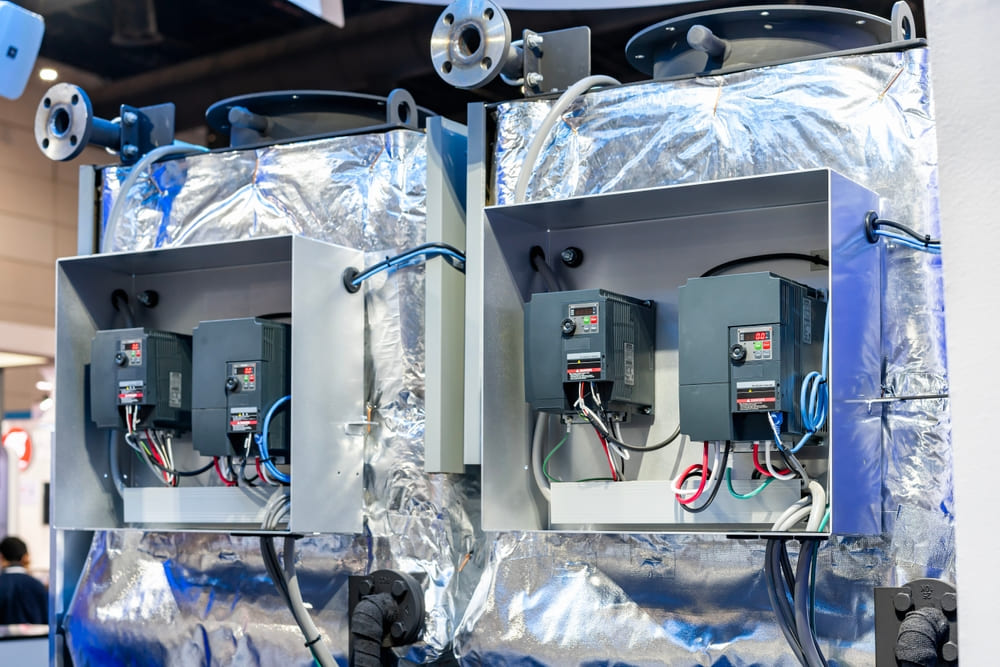
Compared with investment and operating costs, the value that inverters bring to the system is much greater, especially for large-scale production systems, complex structures or specific industrial systems. When using an inverter, the factory will receive the following benefits:
- Control the motor speed by adjusting the input line frequency.
- Reverse the engine rotation direction when the machine runs out of travel or when a problem occurs.
- Protects the motor against overload, overvoltage, voltage drop, phase loss,…
- Minimize starting current, limit voltage drop.
- Supports remote engine control and monitoring.
- Limits sudden starting of large-load motors, avoiding mechanical damage and increasing lifespan, reducing maintenance costs.
- Save energy up to 40% compared to direct start method.
- Reactive power from the motor is minimized, thereby significantly reducing reverse current during operation, reducing costs for capacitor banks, and reducing power loss.
- Reduces engine noise and vibration levels, improving industrial environmental quality and worker health.
See more: Experience in choosing inverters for motors based on capacity
Application of inverter
Inverters are widely used in many industries, in electronic devices, operating systems, electrical equipment,…
In electronic equipment
Many household electronic devices today use single-phase inverters (or inverters) such as refrigerators, air conditioners, washing machines, TVs, etc. These devices operate based on grid rectifiers and inverters that create current with a frequency above 50Hz to help improve the performance of the electric motor.
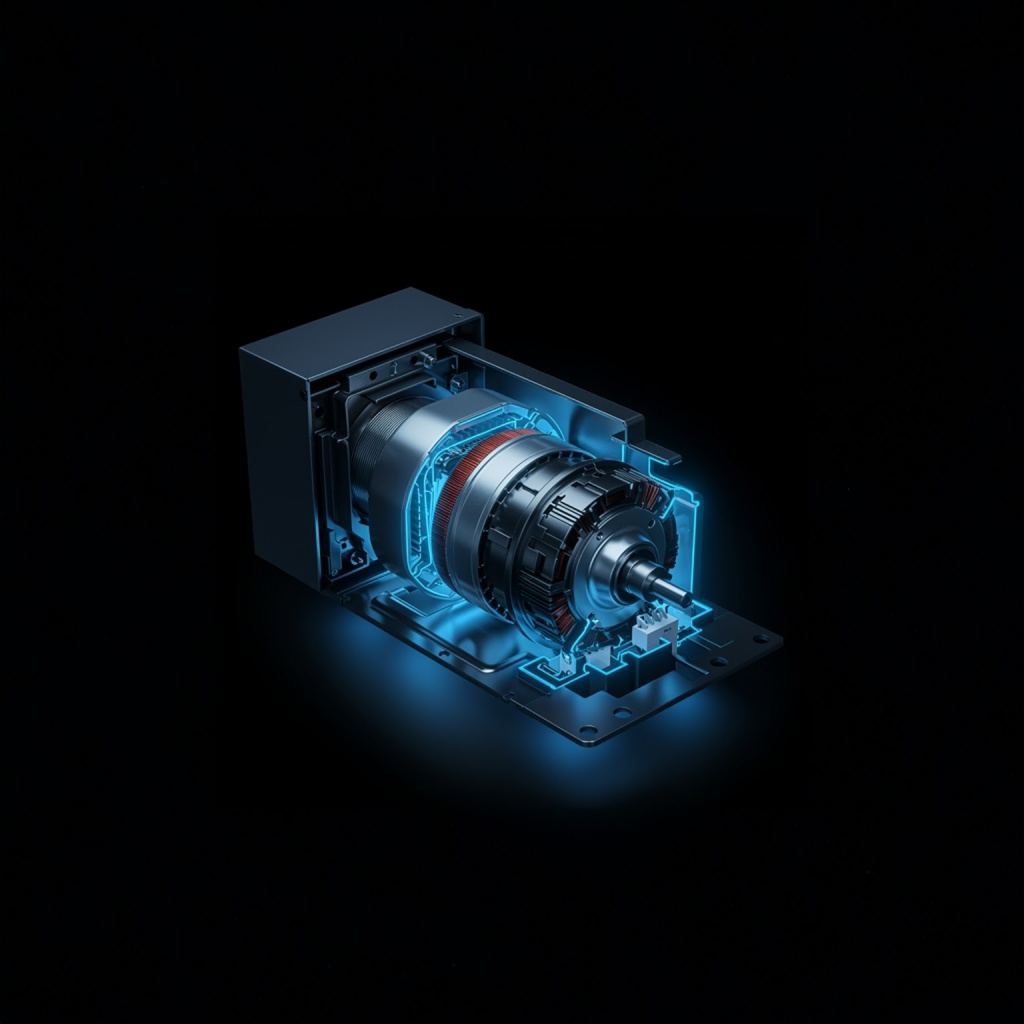
Inverters also appear in small capacity devices (up to several tens of W) such as electronic ballasts for fluorescent bulbs, compact lamps or power supplies for fluorescent tubes (CCFL) (used as backlight for TFT flat screens).
In UPSs
UPS (Uninterruptible Power Supply) or uninterruptible power supply system, backup power storage for computing systems is a group of inverters. UPSs convert DC power from charging batteries to AC power for systems and activate when grid power is lost. Current from UPSs may not have a sinusoidal waveform, may not have stable voltage, and may not have limited power supply time, depending on the type of battery used.
In electrical equipment
Inverters are a necessary component for all renewable energy power plants such as wind power, solar power, tidal power, etc. This is a means of converting the above power sources into industrial AC power and connecting to the grid.
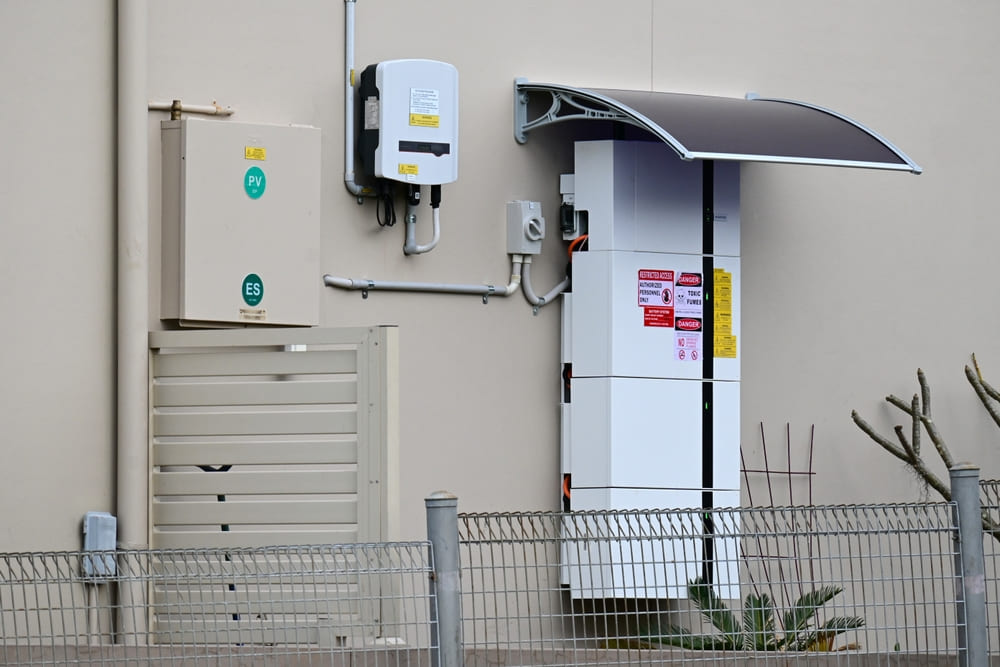
Characteristics of primary electric currents from renewable energy sources are unstable capacity and voltage. To connect this energy to the grid, inverters with rechargeable battery systems are needed to buffer and convert to 3-phase grid power. Particularly for grid-connected inverters, it is required to have a system to control pulse form, phase and voltage to meet the transfer of energy to the grid.
Inverters for rooftop solar power systems usually have a capacity of several kW, converting to 110V AC or 220V AC, 1 phase or 3 phase. On the other hand, inverters for renewable energy power plants with a capacity of several MW, convert primary power sources into 3-phase electricity connected to the grid.
In industry
In industries, the inverter is the core device of the inverter electrical cabinet with flexible control functions, stabilizing motor operation, limiting the risks of overload, overvoltage, voltage drop, etc. The inverter electrical cabinet controls the motor starting current, rotation speed, pressure, operating intensity,…
High-rise building water supply system:
- Previously, water was pressurized to the roof and distributed to each floor through air conditioning and pressure reducing equipment, causing high costs and low efficiency.
- Installing an inverter eliminates the need to build a roof tower, optimizes pumping operations and saves energy.
Exhaust or push fan:
- Industrial fans are commonly used in vacuuming, ventilation, and furnace blowing.
- The inverter controls pressure and flow on demand, soft starts and optimizes motor performance, reducing power consumption.
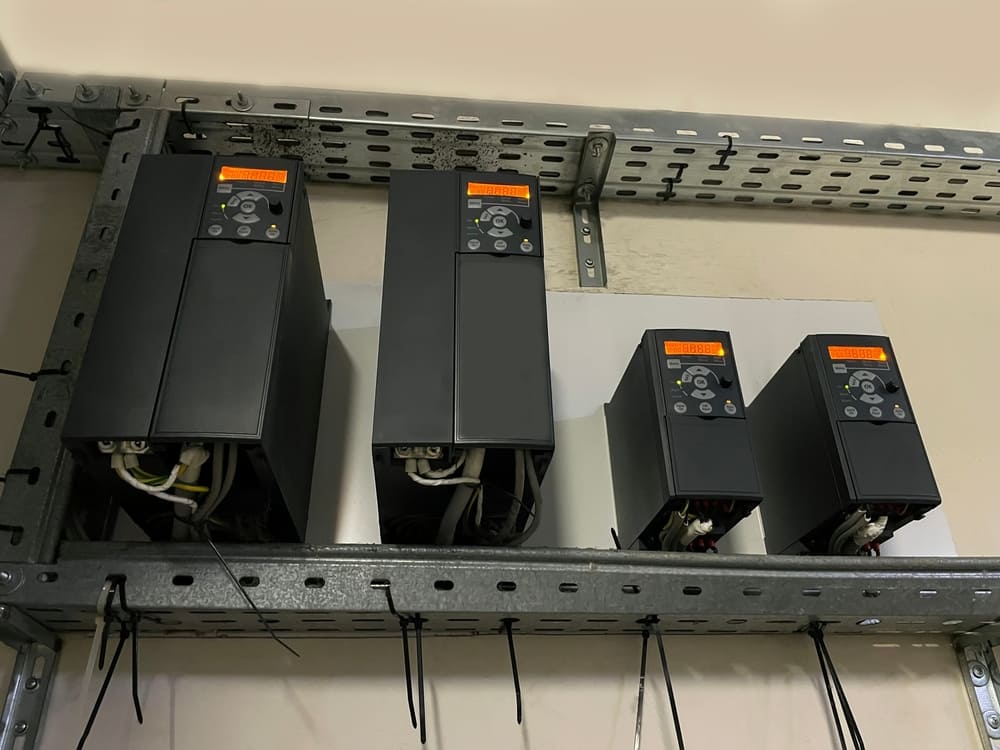
Air compression system:
- The traditional air conditioning method closes/cuts the inlet valve to control pressure. When the pressure reaches the upper limit, the inlet valve closes and the compressor operates without load. Conversely, when the pressure reaches the lower limit, the inlet valve opens and the compressor operates under load.
- 3-phase inverter helps regulate stable output pressure, reduces engine idling time and saves energy.
Lifting and lowering system:
- Inverters precisely control position, torque and braking in cranes and hoists with AC motors.
- The inverter for cranes has an integrated regenerative braking system, sending energy back to the grid, safe and economically efficient.
Leading inverter brands
In the Vietnamese market, the leading companies in inverter technology are all from Europe, followed by brands from Japan, China, Korea or Taiwan.
Some typical European inverter brands: ABB with the world-leading ACS inverter line, Siemens with the 6SL inverter line or Schneider with the ATV inverter line,…

Compared to the economic level, inverters from Japan have quality not inferior to Europe but have better price and high durability. Some famous Japanese inverter brands are Mitsubishi, FuJi, Panasonic, Hitachi, Yaskawa,…
Besides, the INVT inverter brand from China is also considered to have similar quality to the above brands. In addition, the market also has cheaper inverter lines from Korea (LS Electric) or Taiwan (Delta, Shihlin).
Notes when operating the inverter
While using the inverter, the operator should pay attention to the following issues:
- Based on the parts, stages, and production stages to determine the engine capacity, as a premise to choose a suitable inverter, avoid wasting investment costs.
- The components in the inverter are very sensitive to the external environment, so care must be taken to preserve and operate safely and according to proper techniques.
- It is necessary to calculate and combine the inverter with other motor starting methods so that the operation process is smooth, optimizing performance and cost.
Installing, setting up and operating the inverter is usually simple in most cases. The inverter can be installed directly via the control panel or remotely via a computer.
- Case 1: Simple application
The inverter controls motors for equipment such as pumps, fans, conveyors, stirrers, etc. with basic operating programs. Just set functions such as on/off with push button, forward/reverse running, speed adjustment with rheostat or set acceleration/deceleration time.
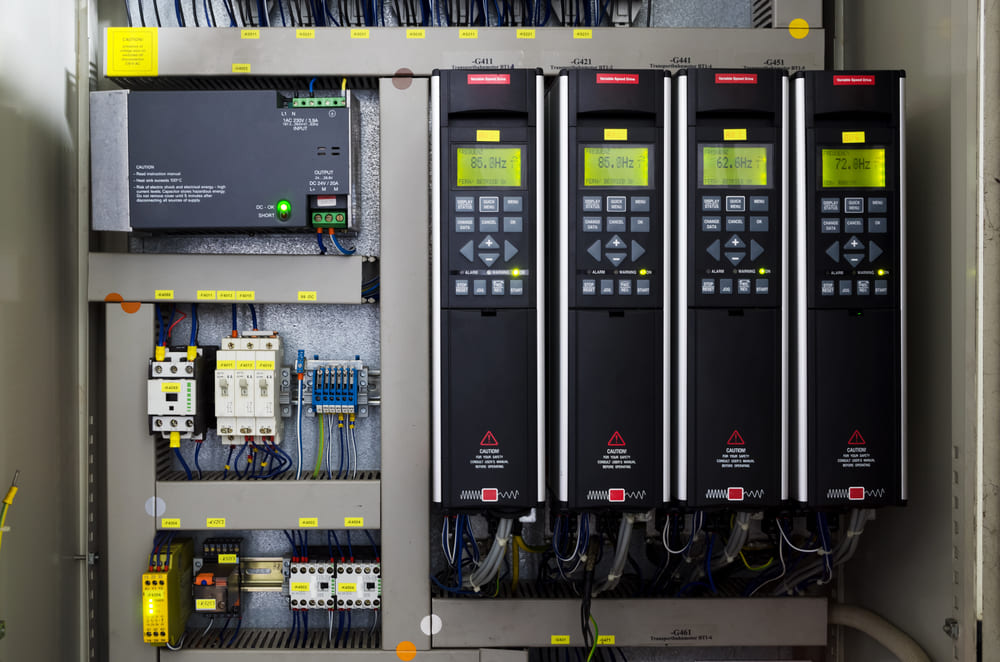
- Case 2: Dedicated application
Inverters control motors for specialized machinery such as plastic production machines, machine tools, washing machines,… with specific operating requirements and closed-loop feedback. Setting parameters requires in-depth knowledge of the device, usually performed by the machine manufacturer. When replacing a new inverter, a specialized technician is needed to reconfigure it.
- Case 3: Highly automated system
The inverter connects communication in the remote monitoring control system via PLC, industrial computers at large factories such as cement, petrochemical, and automobile factories. Requires operators to be highly qualified and knowledgeable about the system.
Continue to follow other articles about inverters and other devices in electrical cabinets at: https://btb-electric.com/vi/tin-tuc/kien-thuc-nganh/kien-thuc-tu-dien/
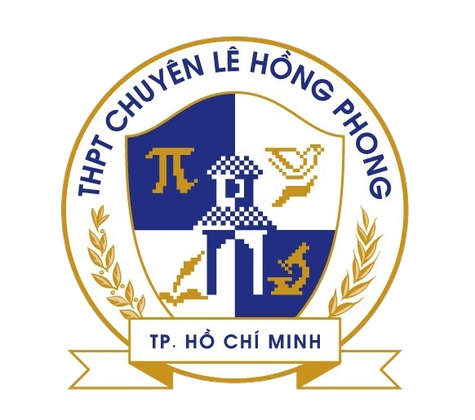

Nội dung được phát triển bởi đội ngũ truonglehongphong.edu.vn với mục đích chia sẻ và tăng trải nghiệm khách hàng. Mọi ý kiến đóng góp xin vui lòng liên hệ tổng đài chăm sóc: 1900 0000 hoặc email: hotro@truonglehongphong.edu.vn